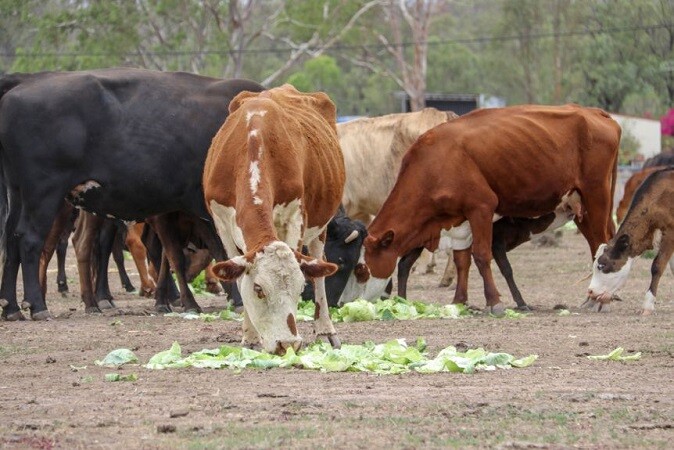

Crops in the brassica family are commonly offered to livestock, especially in the cooler regions of the country, which experience surplus production. They are also used in seasons when perennial livestock feeds are low because of their high production of digestible forage. They include cabbages, cauliflower, rape (colza) and radish. Cattle, rabbits, goats and sheep feed on these crops, which have high quality nutrients and are easily digestible.
However, they pose several challenges if improperly used. Brassica family forage can be utilised in three ways: First, they can be grazed on. Second, they can be chopped and offered to zero-grazed animals and lastly, they can be ensiled.
In grazing, have a plan if the animals are to best utilise the forage material. Introduce animals to brassica pastures slowly so that the rumen microbes adjust effectively. Allow them to graze for short periods.
During grazing, monitor the animals for any adverse reactions to prevent health issues that may arise, like bloat. Further, avoid immediate change of grazing from dry pastures to lush brassica fields. At this point, the animals are ‘hungry’ for fresh pastures and while you may think you are feeding animals on greener pastures, it may turn out disastrous.
In harvest and carry system of feeding, you have control to amounts and time to feed. Provide reasonable amounts at a time so that animals maintain a certain intake level. Excess feeding makes the animals reduce intake due to high moisture content.
This method of utilising brassicas is the best because ensiling is not very effective while grazing is associated with high wastage resulting from trampling by animals. In excess production, some farmers have tried to ensile brassica forage for future feeding. However, this family of crops is difficult to ensile because of the crops’ high water content. If you must ensile, then mix with chopped hay or forage straws. Despite this, problems may still occur.
Brassicas are utilised by animals depending on the level of maturity at harvest. They are highly digestible but have low fibre content, thus, do not offer much to livestock.
In ideal situations, brassica crops should not make more than 75 per cent of the total animal feed. Limit lactating dairy cows to about 30 per cent of the total brassica forage fed to minimise chances of rumen acidosis occurring.
Brassica is also high in calcium, thus, regulate the amount you feed to in-calf cows nearing calving and shortly after calving. When calcium levels are in excess before calving, the cow would have difficulties mobilising stored calcium.
During this period, supplement brassica forage with feeds low in calcium like grass hay and straws. Before maturity, brassicas have high moisture content, enough to cause challenges for animals consuming them. As the crops mature, their dry matter digestibility also increases.
Ruminants like dairy cows need enough dry matter and fibre for proper rumen activity. In fact, brassicas should be fed as concentrates rather than forage since they provide high quality forage with highly digestible energy, considerable protein amounts and are low in fibre content.
Due to their high moisture and low fibre content, supplement brassicas with dry hay to balance the total dry matter intake while availing some fibre. This will increase saliva production, reduce nutritional disorders, stabilise gut function and improve animal performance in general.
Feeding disorders
Brassicas are known for digestive upsets and poisoning, among other disorders, if not managed well. They include bloat, pneumonia and nitrate poisoning.
Bloat can be prevented by ensuring that the dairy animal is full before supplementing them with brassica forage. Bloat has also been known to contribute to high deaths in rabbits, to reduce this, wilt the forage in the sun before offering them to the animals.
By nature, brassica forage is high in sugar, thus, can lead to rumen acidosis. They also have an amino acid compound that accumulate in them and cause haemolytic anaemia and goitre in livestock. If the two are to be prevented, feed brassicas and supplement with iodine, iron and copper to meet the dietary requirements of dairy cattle.
Grazing on brassica crops too early before maturity can also cause photosensitisation, especially in lambs. These disorders are costly to treat and may cause deaths in acute cases. A component of brassica crops called glucosinolates, which taints milk in dairy animals.
 Contact Jaguza Support
Contact Jaguza Support